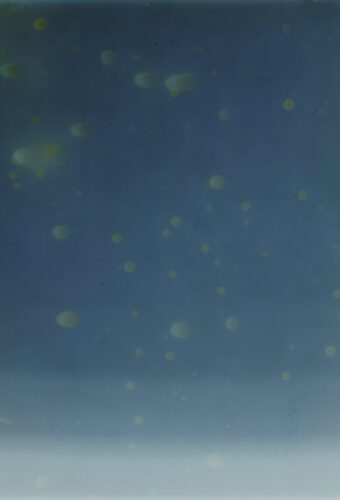Exhibition Hydromedia
The Royal Academy of Arts Antwerp and Stormkop are pleased to invite you to the exhibition ‘Hydromedia: Seeing with Water’. This group show presents the work of four artists working within the framework of the international Creative Europe research project ‘Hydromedia’, initiated by the Thinking Tools research group.
Taking the aquatic ecosystem of the Scheldt Estuary as a starting point, ‘Hydromedia’ wants to create new, easy-to-use visual procedures to re-imagine our relationship with nature. Sidestepping conventional visual approaches to the current climate crisis, these new visual procedures use experimental methods of co-creating and interspecies collaboration, inviting non-human beings and real matter to impress their co-presence in images and sound. In this poetics of shared human and non-human authorship, the anthropocentric perspective inherent in classical lens-based photography is challenged. Thanks to a hands-on and low-tech approach, the ‘seeing with water’ methods developed by the participating artists will be shared with the public as manuals and tools so they could use them themselves to make the effects of global warming in the Scheldt Estuary and in local water resources tangible.
Berlin-based interdisciplinary artist Mirja Busch approaches the often-overlooked phenomenon of ‘puddles’ as experiential sites, storied ecologies and contact zones of the Anthropocene. For ‘Hydromedia’, Busch created an installation that covers the intricate connections between water bodies, heavy metals and urban landscapes at different locations in Antwerp.
The main goal of the project ‘Latent Voice’ of Polish artist Jarek Lustych is to study the phenomenon of nonhuman creativity. By immersing tight strings into the current of the tidal river Scheldt he records the innate sounds of its flow. With the instrument Lustych created he uncovers the river’s unique voice and elicits its melody. .
Berlin-based photographer Sascha Herrmann used experimental photographic processes concerning light refractions, colorimetry and bioluminescence to explore the changes in the environment of the Scheldt Estuary. Besides making photograms of one of the last resilient eels from the Scheldt and presenting them in so-called ‘photoquariums’, he also developed a measuring system for detecting the levels of phosphorus in the ambient water. Furthermore, he filmed the mystical fluorescence of algae and microplastics in the old dry docks of the former port of Antwerp.
Tim Theo Deceuninck, living and working in Belgium, installed ‘living’ field cameras in tree trunks and pipe holes to offer us to look ‘from within’ the polder landscapes of Kruibeke, Hoboken and the river beds of the industrialised port area of Antwerp. In an attempt to imagine from a non-human view, the photographer is only the mediator of the land that is representing itself. ‘Becoming Terrestrial’ also includes extracting light sensitive material from natural resources and using non-toxic organic materials to develop and print his images.


